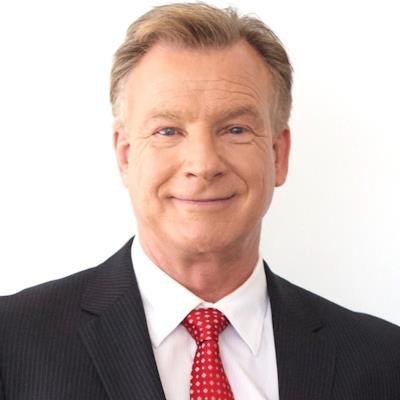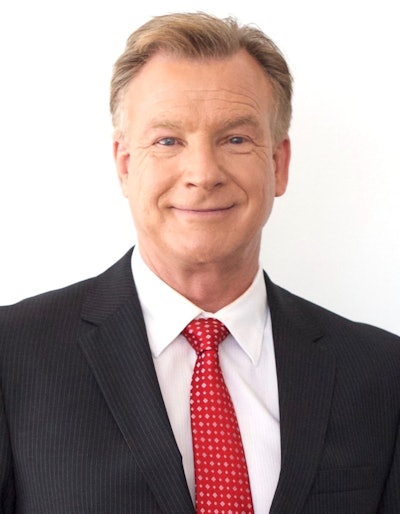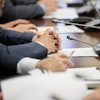
There has been a lot written lately about the "big dip," referring to the significant decrease in hygiene appointments in the last months of the year. After a surge of appointments during the summer, practices are noticing that a significant portion of their patient base, the reluctant patients, are not willing to return to the practice, and so many practices are seeing large gaps in their schedule.
I've talked to several doctors who have 50% openings over the next three months. This big dip is in part because dentists have only appealed to those patients who already understand that the practice is safe and that taking care of their teeth is essential to a healthy immune system. Not every patient understands that.
 Fred Joyal.
Fred Joyal.And we've seen that people are all over the place when it comes to fear or anxiety about catching COVID-19 from a dental visit. Some are more immunocompromised, others are in an at-risk category, and many more are confused or misinformed.
These patients generally don't realize the lengths that most practices have gone to in order to keep them protected. And, unfortunately, a certain percentage of practices are not going to great lengths to keep the practice safe. They are doing the same thing that they were doing before the pandemic started, and some weren't doing as much as they should have even then.
But something else is also happening. I see practices all over the U.S. that are now matching their previous year's revenue. In fact, some of them are at 110% or 120% of revenue, and their schedules are full throughout the fall. I know this isn't happening across the board, because the ADA has recently come out and said that nationally practices are averaging 70% revenue.
These busy practices are also witnessing an increase in new patients, often twice as much as they were before the pandemic, with little or no advertising -- so what is happening?
The answer lies in the type of new patients that are calling. Practices are reporting that as many as 50% of the new patients also are requesting record transfers from their existing dentists. This means that people are actively seeking a different dentist.
Now, we know that a certain percentage of practices closed during the pandemic and decided to never reopen. Sometimes this was because the dentist was too close to retirement and didn't feel safe coming back, or they had other risk categories, or it was just too much trouble to wear all that personal protective equipment (PPE), modify their systems and procedures, and buy additional equipment like air filters and external vacuums.
But the practices that did adapt to COVID-19 by going the extra lengths to protect their patients and to create a safer environment are thriving. Even if it was done just for the optics of safety, not because it was absolutely necessary.
In general, we can agree that people are more cautious and more health conscious as this pandemic continues. We've even had European countries telling people to avoid the dentist unless it's necessary. And so, people are spending time looking online to find practices who have gone above and beyond what is necessary in order to make it safe for the patient.
Most often this is because the practice has added new protocols and technology to increase that safety, like hypochlorous fogging of operatories, external and internal vacuums, lasers, and CAD/CAM.
There is substantial evidence that dental practices were already very safe with all of our basic procedures that we've always had in place. But now it's even more important to offer that extra level of safety. Because there are many patients who are not informed as to the safety measures and misinformed about delaying their care.
The fact is the only thing people have to fight COVID-19 is our immune systems. This is our chance to help people understand the connection between oral health and overall health. Oral wellness is key. We all know it, but a vast segment of public doesn't. In every crisis there is opportunity. This is ours.
This means we must inform them. This will also put you on the receiving end of this patient drift. You want your patients and your community to be aware of the safety measures that you have in place. You want to post it clearly on your website, either with a video or with very clear explanations.
Remember, patients want to spend as little time as possible in the practice. If you have technology that makes that possible, whether it's CAD/CAM or lasers, or the systems that you've put in place that reduce the time in the chair or the number of visits, you can leverage that from a marketing standpoint.
If you've read either of my books, you know that I emphasize being remarkable, being so remarkable that people can't resist talking about you online and to their friends and family. Or, even better, they're willing to make a patient testimonial video that you can use on social media and your website. This is our opportunity to elevate the value of dentistry in patients' minds. Seize it.
Lastly, this won't be the last pandemic that will ever occur. Why not make sure all your patients, and the government agencies and regulatory bodies, know that dental practices are one of the safest places that people can go? That way we never get shut down again.
Our industry has been shaken up by this pandemic, and not every practice is going to come out the other side intact. A good practice coach like those at Fortune Management, who were the first to put a COVID-19 recovery plan into place for their clients, can help you strategize how you can avoid the big dip and capitalize on patient migration.
Fred Joyal is a renowned speaker, author, and consultant on dental marketing. He is the co-founder of 1-800-DENTIST and author of two best-selling books, Everything is Marketing and Becoming Remarkable.
The comments and observations expressed herein do not necessarily reflect the opinions of DrBicuspid.com, nor should they be construed as an endorsement or admonishment of any particular idea, vendor, or organization.


















